- How to Accelerate Tomato Fruit Ripening
- 1. Prune the Tomato Plants
- 2. Increase Temperature
- 3. Use Ethylene Gas
- 4. Remove Excess Foliage
- 5. Harvest and Ripen Indoors
- 6. Assess Maturity
- Harvesting Guidelines for Late-Season Tomatoes
- 1. Check the Color
- 2. Assess Firmness
- 3. Evaluate Size and Shape
- 4. Use the Twist Test
- 5. Harvest in the Morning
- 6. Handle with Care
- 7. Store Properly
- Increasing Temperature for Faster Ripening
- 1. Greenhouse
- 2. Cloches
- 3. Heating devices
- 4. Protective covers
- 5. Mulching
- 6. Temperature-controlled irrigation
- 7. Water barrels
- 8. Artificial light
- Ethylene Gas and Ripening Process
- Effects of Ethylene Gas on Ripening
- Factors Affecting Ethylene Production and Ripening
- Utilizing Ethylene Gas for Ripening
- Using Ethylene-Producing Fruits for Ripening
- 1. Bananas
- 2. Apples
- 3. Avocados
- 4. Other Ethylene-Producing Fruits
- Storage Techniques for Ripe Tomatoes
- 1. Temperature and Humidity
- 2. Single Layer Storage
- 3. Stem Up Storage
- 4. Keep Away from Ethylene-Producing Foods
- 5. Avoid Sunlight
- 6. Check and Sort Regularly
- 7. Freezing or Canning
- Light Exposure and Ripening
- Importance of Light for Ripening
- Factors Affecting Light Exposure
- Artificial Light Sources
- Conclusion
- Proper Air Circulation for Faster Ripening
- Pruning Techniques to Promote Ripening
- 1. Remove Suckers
- 2. Prune Lower Leaves
- 3. Thin Out Excess Foliage
- 4. Prune Indeterminate Varieties
- 5. Provide Support
- “Question-Answer”
- Is it possible to accelerate the ripening process of tomato fruits at the end of the season?
- What are some methods to accelerate the ripening process of tomato fruits?
- How does ethylene gas help in ripening tomatoes?
- Can placing tomatoes in a paper bag with a ripe banana or apple really accelerate their ripening?
- Why would someone want to accelerate the ripening process of tomato fruits at the end of the season?
- Is it better to harvest tomatoes and allow them to ripen indoors or leave them on the vine?
- How long does it take for tomatoes to ripen indoors?
- “Video” HOW TO SPEED UP THE RIPENING OF TOMATOES WITHOUT FERTILIZING a proven method
As the end of the tomato growing season approaches, gardeners are often faced with the challenge of ripening their remaining green tomatoes. Green tomatoes are not fully ripe and lack the sweet and juicy flavor that ripe tomatoes have. However, there are several methods that can be used to accelerate the ripening process and enjoy fully ripe tomatoes even as the season comes to a close.
One effective method to ripen green tomatoes is to harvest them and store them in a warm, dark place. This allows the fruits to benefit from the natural process of ripening that occurs even when they are detached from the plant. Placing them in a paper bag with a ripe banana or apple can further speed up ripening, as these fruits release ethylene gas, a hormone that triggers ripening.
Another method to accelerate the ripening process is by exposing the green tomatoes to sunlight. The sun’s warmth and light can help to increase the production of ethylene gas and speed up the ripening process. However, care should be taken to avoid overexposure, as excessive heat can cause the tomatoes to become overripe or spoiled.
It is important to note that not all green tomatoes will ripen successfully. Often, only those fruits that have reached a certain stage of maturity will ripen off the vine. Those that are too immature may remain hard and green, despite efforts to ripen them. Therefore, it is best to choose tomatoes that have a slight color change or are just starting to blush before attempting to ripen them off the vine.
In conclusion, the end of the tomato growing season does not have to mark the end of enjoying ripe, flavorful tomatoes. By using methods such as storing them in a warm, dark place or exposing them to sunlight, gardeners can accelerate the ripening process of green tomatoes and savor the taste of fully ripe fruit even as the growing season comes to a close.
How to Accelerate Tomato Fruit Ripening
As the end of the growing season approaches, it’s common to have a large amount of green tomatoes still on the vine. If you find yourself in this situation, there are several methods you can use to accelerate the ripening process and enjoy the fruits of your labor before the cold weather sets in.
1. Prune the Tomato Plants
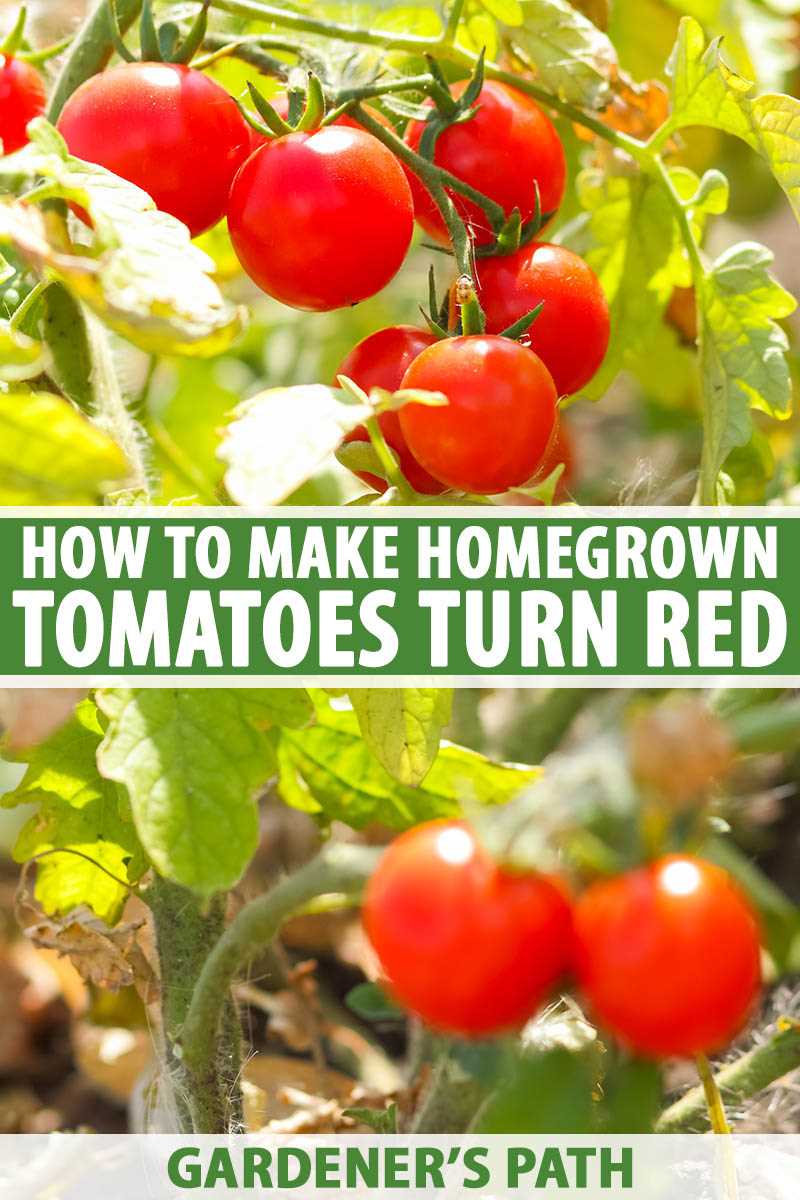
Start by pruning your tomato plants. Remove any excess foliage and non-essential branches to increase airflow and expose the fruit to more sunlight. This will help the fruit ripen faster.
2. Increase Temperature
Tomatoes ripen best in warm temperatures, so if the weather is cool, try to create a warmer environment for your plants. You can cover the tomato plants with plastic or fabric row covers to trap heat during the day. In the evening, remove the covers to prevent excessive moisture buildup.
3. Use Ethylene Gas
Tomatoes naturally produce ethylene gas, which helps in the ripening process. You can speed up ripening by placing a ripe banana or apple in a paper bag with the green tomatoes. The ripe fruit will release ethylene gas, which will accelerate the ripening of the tomatoes.
4. Remove Excess Foliage
If you have a lot of green tomatoes in a small space, it can be beneficial to remove some of the excess foliage to allow more sunlight to reach the fruit. Removing excess leaves will also help improve airflow and prevent diseases.
5. Harvest and Ripen Indoors
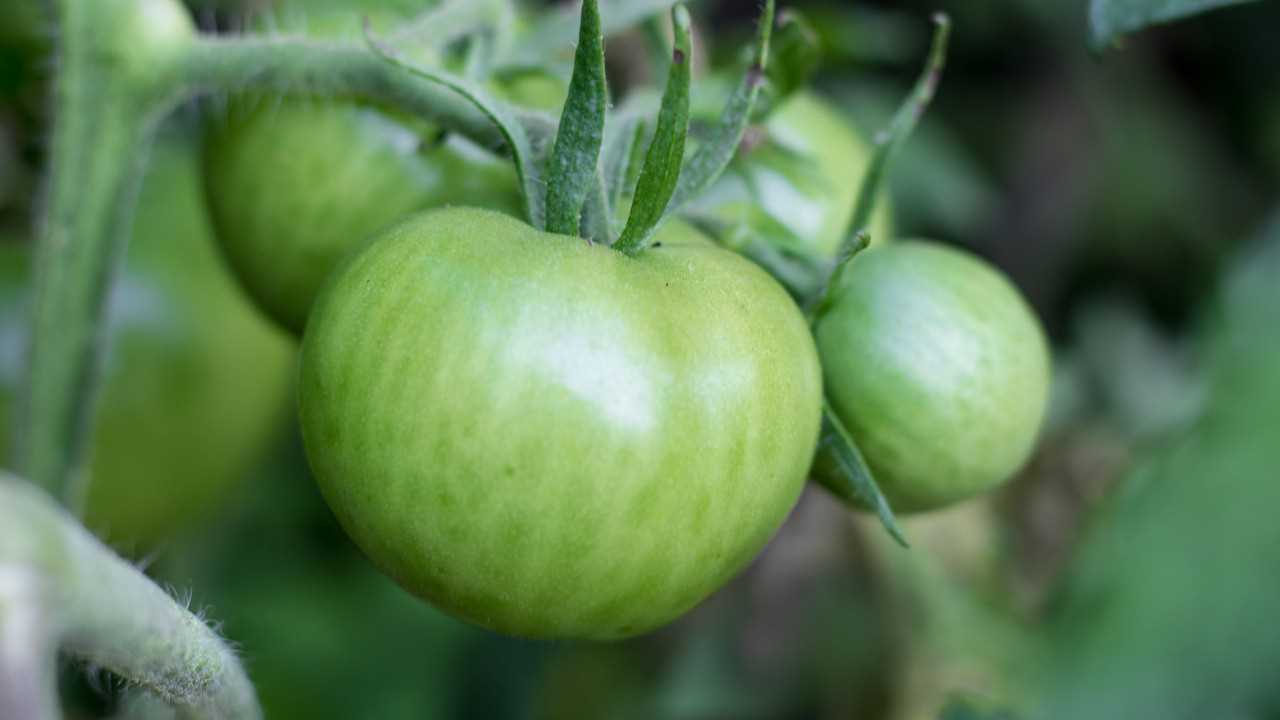
If the weather becomes extremely cold or if frost is in the forecast, it may be necessary to harvest the green tomatoes and ripen them indoors. Wrap each tomato individually in newspaper or place them in a paper bag to maintain humidity. Store them in a cool, dark place, such as a basement or pantry, and check on them regularly to monitor ripening.
6. Assess Maturity
When assessing the ripeness of your tomatoes, pay attention to the color. While green tomatoes will eventually ripen, they should have reached their mature size before harvesting. Additionally, check for a slight give when gently squeezed, indicating that the fruit is starting to soften.
By following these simple steps, you can accelerate the ripening process of your tomato fruits and enjoy a bountiful harvest before the growing season comes to an end.
Harvesting Guidelines for Late-Season Tomatoes
As the end of the tomato season approaches, it’s important to know the right time to harvest your late-season tomatoes. Harvesting too early can result in underripe fruits, while leaving them on the vine for too long can lead to overripe or spoiled tomatoes. Follow these guidelines to ensure a successful late-season tomato harvest.
1. Check the Color
The color of the tomatoes is a good indication of their ripeness. Late-season tomatoes should be fully mature and have a deep, uniform color. Depending on the variety, this may be a deep red, orange, or even purple color. Avoid harvesting tomatoes that are still green, as they are not fully ripe and may not develop their full flavor.
2. Assess Firmness
Gently squeeze the tomatoes to assess their firmness. Late-season tomatoes should be firm but slightly yielding to pressure. They should not be too soft or mushy, as this can indicate overripe or spoiled fruits. If the tomatoes feel too firm, they may need a few more days on the vine to fully ripen.
3. Evaluate Size and Shape
Late-season tomatoes should have reached their full size and have a round, plump shape. Check for any deformities or irregularities that may indicate insect damage or disease. It’s best to harvest tomatoes that are uniform in size and shape for better presentation and quality.
4. Use the Twist Test
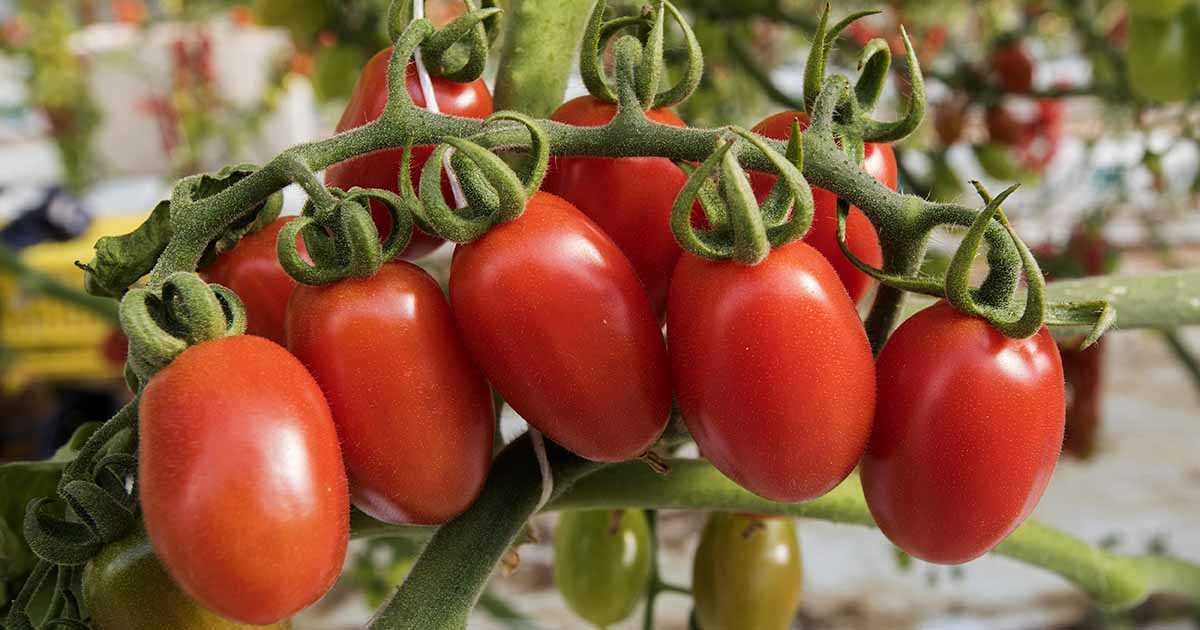
For tomatoes that are still attached to the vine, use the twist test to determine their readiness. Gently twist the tomato and if it easily detaches from the stem, it is ready to be harvested. If it requires force or does not detach easily, leave it on the vine for a few more days and try again later.
5. Harvest in the Morning
The best time to harvest late-season tomatoes is in the morning when the plants are hydrated and temperatures are cooler. This helps preserve the flavor and quality of the fruits. Avoid harvesting tomatoes in the heat of the day, as they may become soft and prone to bruising.
6. Handle with Care
When harvesting tomatoes, handle them with care to avoid bruising or damaging the fruits. Use a pair of scissors or pruning shears to carefully cut the stem, leaving a small portion attached to the tomato. Avoid pulling or yanking the tomatoes off the vine, as this can cause damage and reduce their shelf life.
7. Store Properly
After harvesting, store the late-season tomatoes in a cool, dry place away from direct sunlight. It’s best to store them in a single layer to prevent any bruising or crushing. If possible, avoid refrigerating tomatoes as it can affect their flavor and texture. Use the ripest tomatoes first and monitor the others for any signs of spoilage.
By following these guidelines, you can ensure a successful late-season tomato harvest and enjoy the fruits of your labor for weeks to come.
Increasing Temperature for Faster Ripening
Increasing the temperature in the tomato growing environment can help accelerate the ripening process at the end of the season. Here are some methods to consider:
1. Greenhouse
Using a greenhouse can provide controlled temperature conditions that promote faster ripening. The enclosed structure helps trap heat and maintain higher temperatures, which can speed up the ripening process.
2. Cloches
Cloches are transparent covers placed over individual tomato plants. They create a greenhouse effect by trapping heat and increasing temperatures around the plants. This method can be particularly effective for small-scale cultivation.
3. Heating devices
Installing heating devices, such as heat mats or heating cables, near the tomato plants can raise the temperature in the growing area. These devices provide direct heat to the plants and help accelerate ripening.
4. Protective covers
Placing protective covers, such as plastic sheets or row covers, over the entire tomato bed can help create a warmer microclimate. These covers reduce heat loss and promote higher temperatures, resulting in faster ripening.
5. Mulching
Applying a layer of organic mulch, such as straw or compost, around the tomato plants can help regulate soil temperature. Mulching insulates the soil, keeping it warmer during cooler periods and promoting faster ripening.
6. Temperature-controlled irrigation
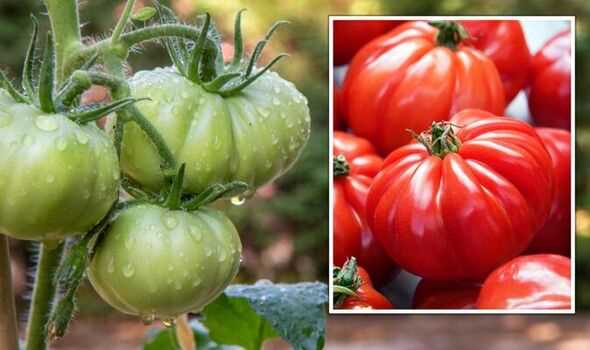
Using temperature-controlled irrigation systems can help maintain optimal growing conditions. By delivering warm water to the plants, the root zone temperature can be elevated, promoting faster ripening of the tomatoes.
7. Water barrels
Placing water barrels near the tomato plants can act as heat sinks, absorbing heat during the day and releasing it at night. This can help raise the overall temperature in the growing area and speed up ripening.
8. Artificial light
Supplementing natural sunlight with artificial light, such as grow lights, can increase the amount of light and heat the tomato plants receive. This additional light can provide warmth and boost the ripening process.
Remember, while increasing the temperature can accelerate ripening, it’s essential to monitor and maintain optimal temperature levels to avoid causing stress or damage to the tomato plants.
Ethylene Gas and Ripening Process
Ethylene gas is a naturally occurring plant hormone that plays a crucial role in the ripening process of fruits, including tomatoes. It is a volatile compound that is released by plants as they mature, particularly during the final stages of fruit development.
The ripening process of tomatoes involves a series of physiological and biochemical changes. These changes are initiated and regulated by ethylene gas. As the fruits mature, they produce increasing amounts of ethylene, which triggers a cascade of ripening events.
Effects of Ethylene Gas on Ripening
- Color Change: Ethylene gas stimulates the production of pigments responsible for the change in color from green to red or yellow in tomatoes. This is a visual indicator of ripeness.
- Softening: Ethylene gas promotes the breakdown of cell walls, leading to a softer texture in ripe tomatoes. This is an important characteristic that makes them more appealing for consumption.
- Flavor Development: Ethylene gas influences the synthesis of volatile compounds responsible for flavor development in tomatoes. Ripe tomatoes tend to have a sweeter and more distinct taste.
- Aroma Production: Ethylene gas induces the production of volatile compounds that contribute to the characteristic aroma of ripe tomatoes. This aroma can attract animals and humans, aiding in seed dispersal and consumption.
Factors Affecting Ethylene Production and Ripening
Several factors can influence the production and sensitivity of tomatoes to ethylene gas:
- Temperature: Higher temperatures can stimulate ethylene production and accelerate the ripening process, while lower temperatures can slow it down.
- Oxygen Levels: High oxygen levels can inhibit ethylene production and delay ripening.
- CO2 Levels: High levels of carbon dioxide can increase ethylene production.
- Other Ripening Fruits: Tomatoes release and respond to ethylene gas produced by other ripening fruits, such as bananas or apples. This can lead to the synchrony of ripening in mixed fruit displays.
Utilizing Ethylene Gas for Ripening
Understanding the role of ethylene gas in the ripening process of tomatoes can be useful for controlling and accelerating the ripening process. By managing factors such as temperature, oxygen levels, and ethylene exposure, it is possible to manipulate the rate of ripening to meet specific needs.
For example, increasing the temperature and exposure to ethylene gas can help accelerate the ripening of tomatoes at the end of the season when cooler temperatures may slow down the process. On the other hand, reducing ethylene exposure and maintaining lower temperatures can extend the shelf life of tomatoes, preventing overripening.
Overall, ethylene gas plays a vital role in the ripening process of tomato fruits. Understanding its effects and utilizing this knowledge can help optimize the ripening process for better fruit quality and efficient harvest management.
Using Ethylene-Producing Fruits for Ripening
Ethylene is a natural plant hormone that plays a crucial role in the ripening process of fruits. It is responsible for the color change, softening, and flavor development of fruits, including tomatoes. By exposing tomatoes to ethylene, you can accelerate their ripening process, particularly at the end of the season when the weather is cooler and sunlight is reduced. One way to source ethylene is through the use of ethylene-producing fruits.
1. Bananas
Perhaps the most commonly used ethylene-producing fruit for ripening tomatoes is bananas. Ripe bananas emit high amounts of ethylene gas, which can help speed up the ripening process of nearby fruits. When using bananas, place them in a paper bag along with unripe tomatoes. The bag will trap the ethylene gas released by the bananas, allowing it to concentrate around the tomatoes and promote faster ripening.
2. Apples
Apples are another excellent source of ethylene. Like bananas, ripe apples emit ethylene gas that can trigger the ripening process. To ripen tomatoes using apples, place a ripe apple alongside the unripe tomatoes in a paper bag. The ethylene released by the apple will assist in ripening the tomatoes more quickly. Remember to check the tomatoes regularly to prevent overripening.
3. Avocados
Avocados, when ripe, also produce ethylene gas. By placing a ripe avocado in a paper bag together with unripe tomatoes, you can expedite the ripening process. The ethylene gas released by the avocado will promote faster ripening of the tomatoes. Keep in mind that avocados can ripen quickly, so monitor the tomatoes closely to prevent overripening.
4. Other Ethylene-Producing Fruits
In addition to bananas, apples, and avocados, there are several other fruits that produce ethylene and can be used for ripening tomatoes. These include mangos, kiwis, pears, and apricots. Follow the same procedure as mentioned above, placing a ripe fruit in a bag with unripe tomatoes to expose them to the ethylene gas and expedite the ripening process.
Using ethylene-producing fruits for ripening tomatoes can be an effective method, especially towards the end of the season when ripening naturally becomes more challenging. However, it is important to monitor the process closely to avoid overripening and spoilage. Experiment with different fruits and techniques to find the right balance for achieving desired results.
Storage Techniques for Ripe Tomatoes
Once your tomato fruits have ripened at the end of the season, it is important to store them properly to maximize their shelf life and maintain their quality. Here are some storage techniques you can use:
1. Temperature and Humidity
Tomatoes should be stored at a temperature between 55°F (13°C) and 70°F (21°C). Avoid storing them in the refrigerator, as the cold temperatures can cause the tomatoes to lose their flavor and develop a mealy texture. Additionally, tomatoes should be stored in a dry environment to prevent mold growth.
2. Single Layer Storage
Store ripe tomatoes in a single layer to prevent them from getting crushed or bruised. This also allows air to circulate around each tomato, helping to maintain their freshness.
3. Stem Up Storage
Store tomatoes with their stem side up. This minimizes the potential for moisture to accumulate around the stem area, which can lead to rotting.
4. Keep Away from Ethylene-Producing Foods
Tomatoes are sensitive to ethylene gas, which is naturally produced by certain fruits, such as apples, bananas, and melons. Store tomatoes separately from these ethylene-producing fruits to prevent them from ripening too quickly.
5. Avoid Sunlight
Direct sunlight can cause tomatoes to overripen quickly and lose their flavor. Store them in a cool, dark place, such as a pantry or cellar, to maintain their quality for a longer period.
6. Check and Sort Regularly
Inspect your stored tomatoes regularly and remove any that show signs of rotting or bruising. By sorting them, you can prevent the spread of spoilage to other tomatoes and prolong the shelf life of the remaining fruits.
7. Freezing or Canning
If you have a large quantity of ripe tomatoes and cannot consume them all before they spoil, consider freezing or canning them. Freezing tomatoes requires blanching and peeling before placing them in freezer-safe containers. Canning tomatoes involves boiling them in a water bath or pressure canner with added preservation agents.
By following these storage techniques, you can enjoy the flavor and freshness of ripe tomatoes even after the end of the growing season.
Light Exposure and Ripening
Light exposure is an important factor that affects the ripening process of tomato fruits. Tomatoes require an optimal amount of sunlight to ripen properly.
Importance of Light for Ripening
Tomatoes are phototropic, meaning they respond to light by growing towards it. Sunlight is essential for the synthesis of chlorophyll, which gives tomatoes their green color. As the fruits mature, they rely on light to trigger the production of ethylene, a hormone responsible for fruit ripening.
Without sufficient light exposure, tomato fruits may not ripen evenly or fully develop their characteristic color, flavor, and texture.
Factors Affecting Light Exposure
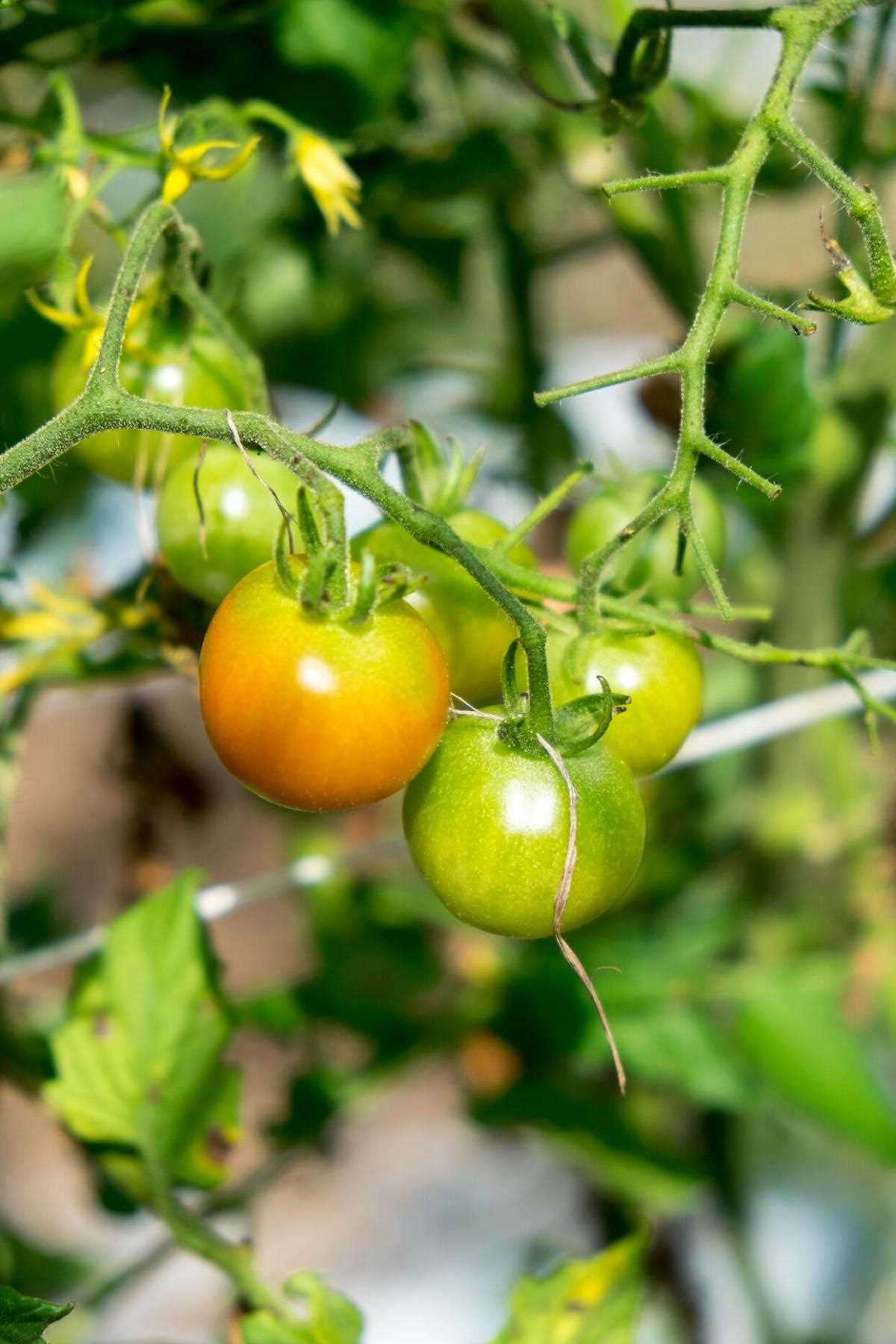
- Position of the Plant: Placing tomato plants in areas with maximum sunlight exposure, such as near south-facing walls or in open spaces, can ensure adequate light for ripening.
- Canopy Management: Proper pruning and training of tomato plants can help optimize light penetration to all parts of the plant, including the fruits.
- Shade and Obstacles: Avoid shading tomato plants with nearby trees, tall structures, or neighboring plants. These can obstruct the sunlight and limit the light exposure to the fruits.
- Weather Conditions: Cloudy, overcast days can reduce the amount of sunlight reaching the tomato plants, leading to slower ripening.
Artificial Light Sources
In situations where natural sunlight is limited, supplementary artificial light sources can be used to accelerate the ripening process. Here are some commonly used artificial light sources:
- Fluorescent Lights: Fluorescent tubes that emit a combination of cool-white and warm-white light can be used to simulate natural sunlight. Positioning the lights close to the tomato plants can provide the necessary light intensity.
- LED Grow Lights: LED grow lights have become popular due to their energy efficiency and customizable light spectrum. Blue and red LEDs are commonly used to stimulate plant growth and ripening.
- Incandescent Lights: Incandescent bulbs emit a warm, reddish light that can promote fruit ripening. However, they are less efficient compared to other light sources.
Conclusion
Light exposure plays a crucial role in the ripening process of tomato fruits. Adequate sunlight or the use of artificial light sources can ensure that tomatoes ripen evenly, develop their desired color and flavor, and reach their full potential before the end of the season.
Proper Air Circulation for Faster Ripening
Proper air circulation is essential for accelerating the ripening process of tomato fruit at the end of the season. By ensuring adequate airflow, you can facilitate the exchange of gases and moisture, which are crucial for hastening the ripening process.
Here are some tips to improve air circulation:
- Spacing: Make sure to leave enough space between your tomato plants. This allows air to flow freely between them, preventing the buildup of moisture and reducing the risk of disease.
- Pruning: Regularly prune your tomato plants to remove any excessive foliage. This opens up the plant, allowing air to circulate more effectively around the fruit.
- Staking or Trellising: Provide support for your tomato plants by staking or trellising them. This keeps the plants upright and allows for better air circulation.
Avoid these common mistakes:
- Overcrowding: Planting your tomato plants too closely together can impede air movement, leading to slower ripening.
- Blocking airflow: Avoid placing obstacles such as tall plants or structures near your tomato plants, as they can block air circulation.
The benefits of proper air circulation:
- Quicker ripening: Good air circulation helps dissipate ethylene gas, which is produced by ripening fruits. This, in turn, speeds up the ripening process of nearby tomatoes.
- Prevention of mold and rot: Proper airflow reduces the chances of mold or rot developing on the fruit’s surface.
- Improved overall plant health: Adequate air circulation helps prevent the spread of diseases by reducing the humidity around the plants.
Conclusion:
By ensuring proper air circulation in your tomato garden, you can significantly accelerate the ripening process of the fruit. Utilize the tips mentioned above, and you’ll be on your way to enjoying ripe and flavorful tomatoes before the end of the season.
Pruning Techniques to Promote Ripening
Pruning tomato plants can be an effective way to accelerate the ripening process, especially towards the end of the season. By removing excess foliage and focusing the plant’s energy on fruit production, gardeners can ensure a bountiful harvest of fully ripened tomatoes.
1. Remove Suckers
Tomato plants often develop axillary shoots, known as suckers, between the main stem and the leaf stems. These suckers can divert energy away from fruit production, so it’s important to remove them. Use sharp pruning shears to cut off suckers when they are small, ideally before they reach a length of 2-4 inches.
2. Prune Lower Leaves
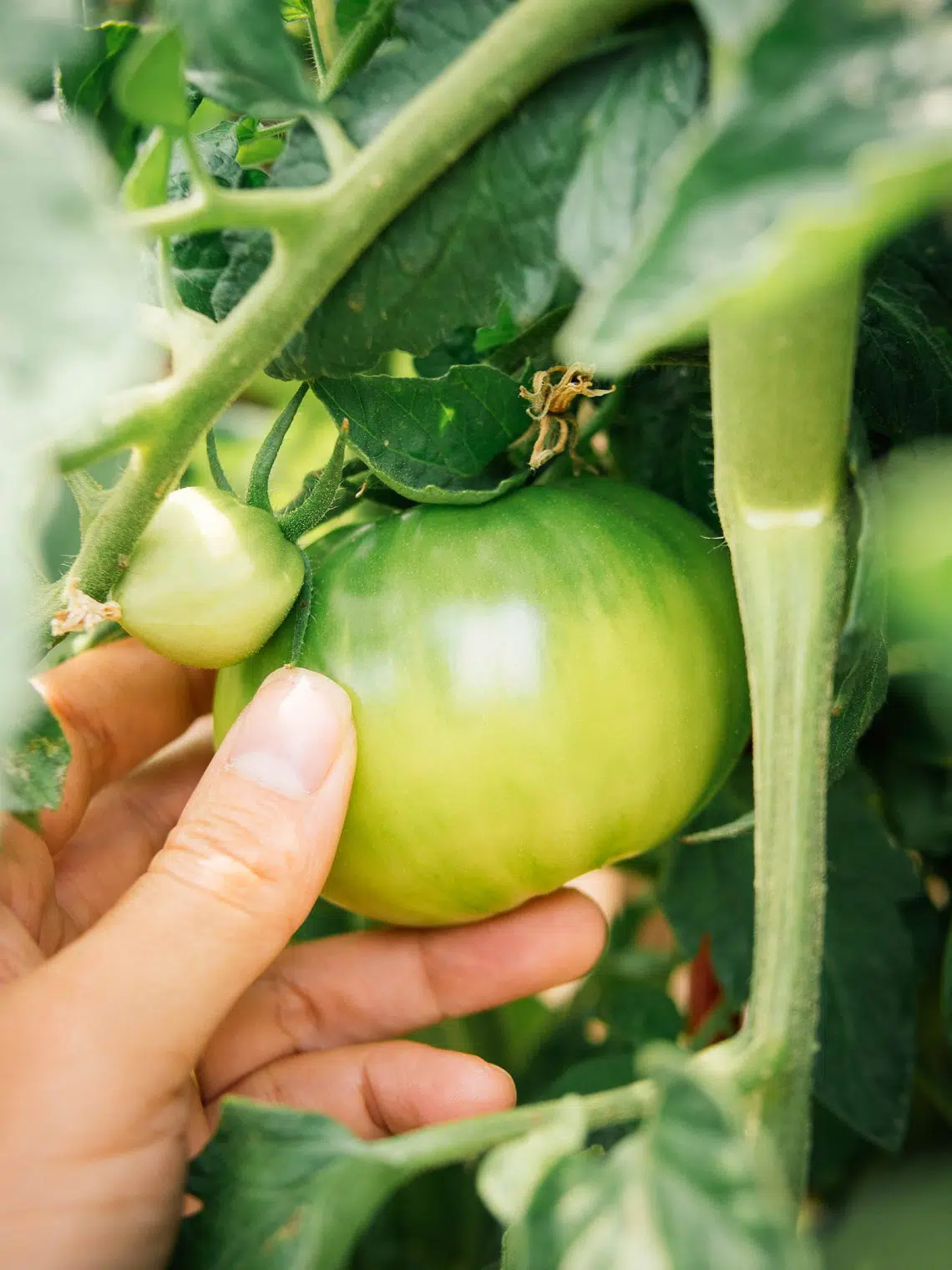
Lower leaves of tomato plants often touch the soil, making them more susceptible to diseases and pests. Pruning the lower leaves not only reduces the risk of infection but also improves air circulation and sunlight penetration to the ripening fruit. Remove any yellowing or diseased leaves, as well as any leaves that are blocking light from reaching the fruit.
3. Thin Out Excess Foliage
Tomato plants can become bushy with excessive foliage, which can shade the fruit and delay ripening. Thin out the foliage by selectively removing some of the leaves to allow more sunlight to reach the fruit. Focus on removing the larger, older leaves that are not contributing significantly to photosynthesis.
4. Prune Indeterminate Varieties
Indeterminate tomato varieties continue to produce new growth and set fruit until the first frost. Pruning indeterminate varieties can help boost ripening by limiting the number of fruit the plant needs to support. Focus on removing smaller, underdeveloped fruit clusters, leaving only a few well-developed clusters to ripen fully.
5. Provide Support
During pruning, it’s crucial to provide proper support for the remaining plant structure. Use stakes, cages, or trellises to keep the plant upright and prevent branches from breaking under the weight of the fruit. Ensuring good ventilation and reducing physical stress on the plant will help promote ripening.
By implementing these pruning techniques, gardeners can maximize the ripening process of tomato fruits, even as the growing season comes to an end. It’s important to monitor the plants closely after pruning and provide them with adequate water and nutrients to support the development of healthy, fully ripened tomatoes.
“Question-Answer”
Is it possible to accelerate the ripening process of tomato fruits at the end of the season?
Yes, it is possible to accelerate the ripening process of tomato fruits at the end of the season through various methods.
What are some methods to accelerate the ripening process of tomato fruits?
Some methods to accelerate the ripening process of tomato fruits include using ethylene gas, placing them in a paper bag with a ripe banana or apple, or harvesting them and allowing them to ripen indoors.
How does ethylene gas help in ripening tomatoes?
Ethylene gas is a natural plant hormone that triggers the ripening process in fruits, including tomatoes. By exposing tomatoes to ethylene gas, either by placing them with ethylene-producing fruits or using an ethylene spray, their ripening can be accelerated.
Can placing tomatoes in a paper bag with a ripe banana or apple really accelerate their ripening?
Yes, placing tomatoes in a paper bag with a ripe banana or apple can accelerate their ripening. Bananas and apples produce ethylene gas, which helps in the ripening process. The paper bag helps to concentrate the ethylene gas around the tomatoes, hastening their ripening.
Why would someone want to accelerate the ripening process of tomato fruits at the end of the season?
There are several reasons why someone would want to accelerate the ripening process of tomato fruits at the end of the season. It could be because of an impending frost or cold weather, the desire to have ripe tomatoes for consumption or preserving, or to maximize the yield before the end of the growing season.
Is it better to harvest tomatoes and allow them to ripen indoors or leave them on the vine?
It depends on the specific situation. If there is a risk of frost or cold weather that could damage the tomatoes, it is better to harvest them and allow them to ripen indoors. However, if the weather conditions are favorable and there is no urgency, leaving tomatoes on the vine can enhance their flavor.
How long does it take for tomatoes to ripen indoors?
The time it takes for tomatoes to ripen indoors can vary depending on several factors, such as the tomato variety, the level of ripeness at the time of harvesting, temperature, and humidity. On average, it can take anywhere from a few days to a couple of weeks for tomatoes to ripen indoors.







